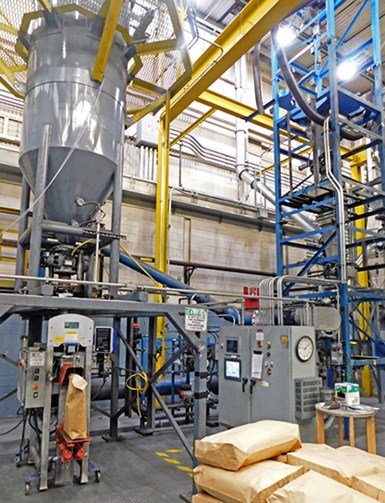NeoGraf Solutions Targets Graphene Market With New Additives
NeoGraf’s Graf-X line of graphene nanoplatelets and precursors is said to deliver enhanced mechanical strength, corrosion resistance, electrical conductivity, thermal properties and reliability in a range of coatings, adhesives, sealants and elastomers applications.
NeoGraf Solutions, a developer and manufacturer of high-performance natural and synthetic graphite sheet and powder, has launched a new line of Graf-X graphene nanoplatelets (GNP) and graphene precursors (GP). According to the company, these additive materials deliver enhanced mechanical strength, corrosion resistance, electrical conductivity, thermal properties and reliability in a broad range of coatings, adhesives, sealants and elastomers (CASE) applications.
Graphene is a single layer of carbon atoms arranged in a hexagonal matrix that is high in strength, thin and is said to offer the highest electrical and thermal conductivity. GNPs are ultra-thin, multilayer graphene nanoplatelets, and GPs are designed specifically as a raw material for high-volume production of graphene products through further processing. NeoGraf Solutions hopes to scale production for other graphene producers with its GPs.
Graphene products are used in a variety of applications and, according to the company, the market is growing. In marine coatings, GNPs are used as an anti-corrosive and can reportedly improve a ship’s fuel efficiency by reducing drag due to hull biofouling. They also prevent crack propagation in adhesives and are said to deliver improved wear reduction over typical graphite in lubricant applications. In addition, advanced graphene can be used as a non-toxic alternative to corrosion-resistant materials containing chromium, cobalt and cadmium. Graphene products work as a cement admixture additive for building and construction, in foam insulation products for automotive and in energy storage additives for electric vehicles. They can also be used as conductive additives for alkaline and lithium-ion battery cathodes and anodes.
“Graf-X graphene nanoplatelets are enabling strength improvements in concrete of 20% or more, with graphene loadings of 1% by weight. This was not possible with a graphite additive solution,” says Jon Taylor, NeoGraf’s product manager. He adds, “In many cases, such as composites, the addition of 5-40% by weight for graphite additives is required to boost electrical, thermal or mechanical properties, while graphene can achieve similar benefits with loadings of <5% — with some cases as little as 0.5%.”
NeoGraf’s production facilities in Lakewood, Ohio feature automated and continuous production equipment for Graf-X graphene additives. Photo Credit: NeoGraf Solutions
NeoGraf’s facility in Lakewood, Ohio, reportedly has the capacity to produce over 750 metric tons of GNP, as well as approximately 1,300 metric tons of GP per year. Taylor says this capacity sets the company apart from other graphene manufacturers who produce, on average, 10 metric tons per year. Taylor estimates that the graphene market will need around 7,000 metric tons per year within the next 5 to 10 years to support applications in development and commercial adoption.
Taylor concludes, “Graf-X graphene nanoplatelets can provide the performance benefits graphene has shown in lab-scale demonstrations at the volume, quality and cost required for industry-changing, real-world applications.”
Related Content
-
Coatings Plant Evolves with Market Trends
Expanding its focus from exclusively serving the RV industry, one of this company’s stand-alone coatings plant has successfully extended its services to additional markets.
-
Products Finishing Reveals 2024 Qualifying Top Shops
PF reveals the qualifying shops in its annual Top Shops Benchmarking Survey — a program designed to offer shops insights into their overall performance in the industry.
-
Conveyors and Paint Systems
Choosing the right conveyor system, coating technology, and ancillary equipment.



















